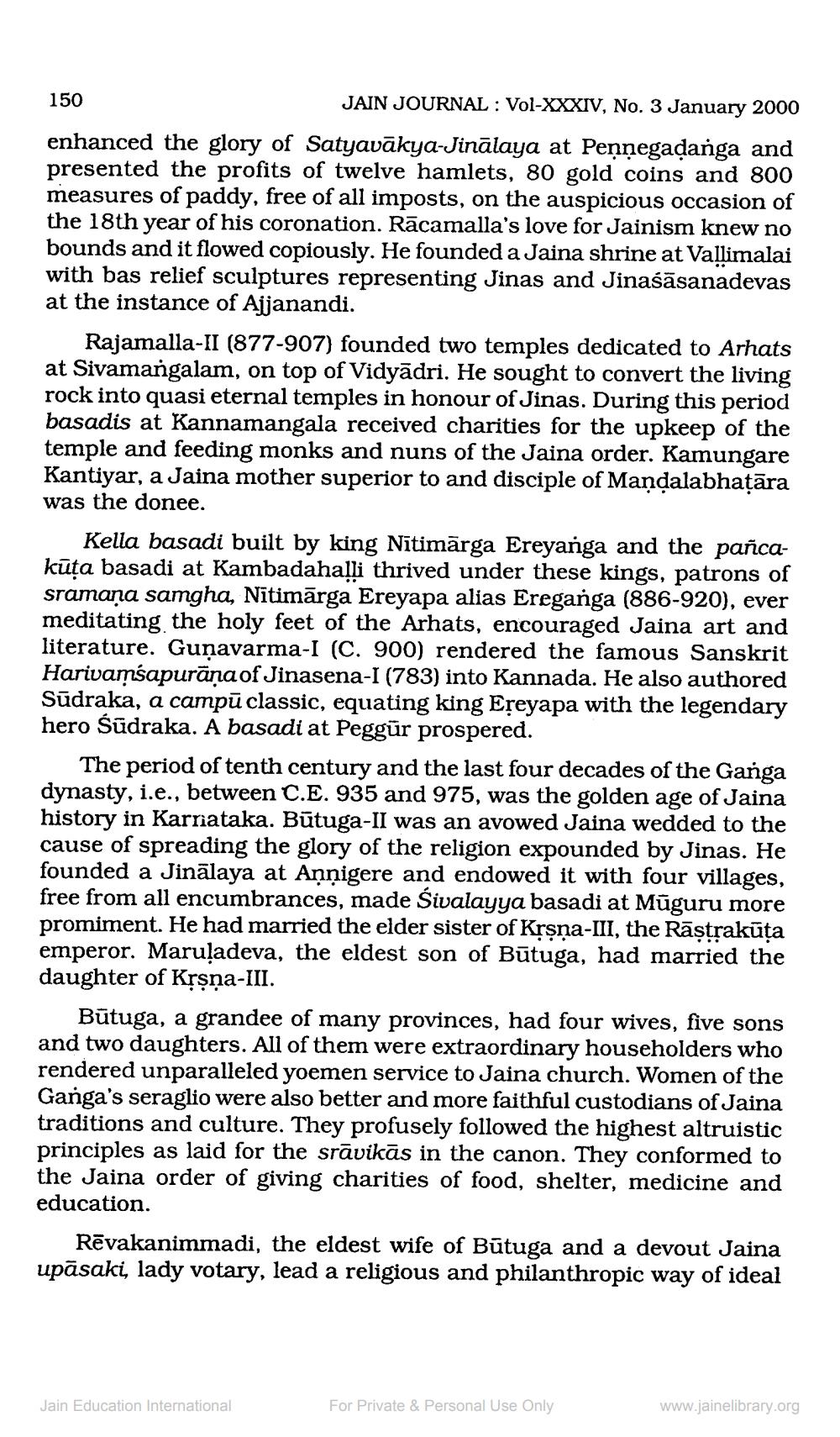________________
150
JAIN JOURNAL : Vol-XXXIV, No. 3 January 2000 enhanced the glory of Satyavākya-Jinālaya at Pennegadanga and presented the profits of twelve hamlets, 80 gold coins and 800 measures of paddy, free of all imposts, on the auspicious occasion of the 18th year of his coronation. Rācamalla's love for Jainism knew no bounds and it flowed copiously. He founded a Jaina shrine at Vallimalai with bas relief sculptures representing Jinas and Jinaśāsanadevas at the instance of Ajjanandi.
Rajamalla-II (877-907) founded two temples dedicated to Arhats at Sivamangalam, on top of Vidyādri. He sought to convert the living rock into quasi eternal temples in honour of Jinas. During this period basadis at Kannamangala received charities for the upkeep of the temple and feeding monks and nuns of the Jaina order. Kamungare Kantiyar, a Jaina mother superior to and disciple of Mandalabhațāra was the donee.
Kella basadi built by king Nītimārga Ereyanga and the pañcakūta basadi at Kambadahalli thrived under these kings, patrons of sramaņa samgha, Nītimārga Ereyapa alias Ereganga (886-920), ever meditating the holy feet of the Arhats, encouraged Jaina art and literature. Guņavarma-I (C. 900) rendered the famous Sanskrit Harivamsapurānaof Jinasena-I (783) into Kannada. He also authored Sūdraka, a campūclassic, equating king Ereyapa with the legendary hero Śūdraka. A basadi at Peggür prospered.
The period of tenth century and the last four decades of the Ganga dynasty, i.e., between C.E. 935 and 975, was the golden age of Jaina history in Karriataka. Būtuga-II was an avowed Jaina wedded to the cause of spreading the glory of the religion expounded by Jinas. He founded a Jinālaya at Annigere and endowed it with four villages, free from all encumbrances, made Šivalayya basadi at Mūguru more promiment. He had married the elder sister of Krsna-III, the Rāstrakūta emperor. Maru!adeva, the eldest son of Būtuga, had married the daughter of Krşņa-III.
Būtuga, a grandee of many provinces, had four wives, five sons and two daughters. All of them were extraordinary householders who rendered unparalleled yoemen service to Jaina church. Women of the Ganga's seraglio were also better and more faithful custodians of Jaina traditions and culture. They profusely followed the highest altruistic principles as laid for the srāvikās in the canon. They conformed to the Jaina order of giving charities of food, shelter, medicine and education.
Rēvakanimmadi, the eldest wife of Būtuga and a devout Jaina upāsaki, lady votary, lead a religious and philanthropic way of ideal
Jain Education International
For Private & Personal Use Only
www.jainelibrary.org




